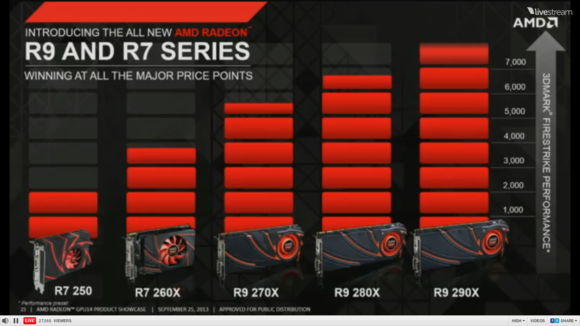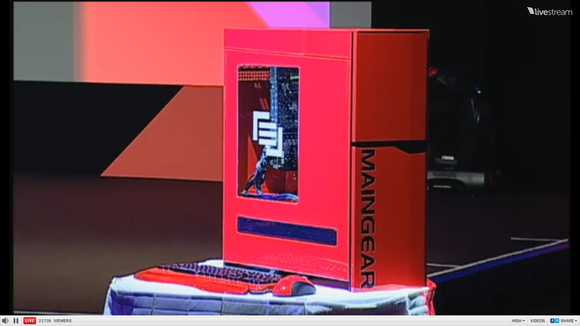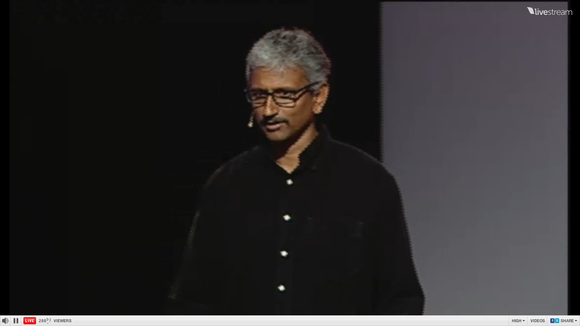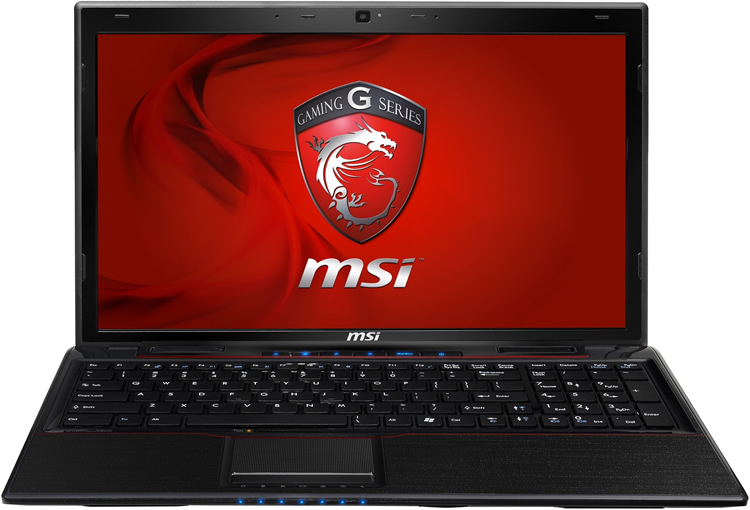AMD Radeon Vega Is Here!!!! Intel’s 545S… an affordable SSD, Samsung Galaxy S8+ and OnePlus 5 reviews… and mining specific GPUs. That’s a thing now! All that and more in This Week In Computer Hardware episode 421!
Tag Archives: radeon
This Week in Computer Hardware 411: AMD Radeon RX580 vs. The World!
AMD Radeon RX 500 series GPUS, Intel Optane SSD DC P4800X 375GB, one beast of an Optane drive, Logitech’s G413 backlit mechanical keyboard, Facebook wants you to type WITH YOUR MIND, Nintendo’s gonna break your heart w/ a Mini Super Nintendo Entertainment System, and more!
Nvidia slashes GeForce GTX 780, 770 prices as it preps for GTX 780 Ti launch
Earlier today we reported that Nvidia has added ShadowPlay support to its GeForce Experience software and now we are hearing the GPU maker has slashed the price of some of their high-end GTX 700-series graphics cards and announced a release date for the GTX 780 Ti. Busy day at Nvidia, eh?
The suggested retail price for the GeForce GTX 780 will dropped from $649 to $499 while the GTX 770 will soon sell for $329 versus the previous $399 asking price. The cuts are expected to go into effect starting at 6 a.m. on October 29 so if you are in the market for either of these cards, just wait a day and save yourself enough money to buy some new games on Nvidia’s dime.
The price breaks will position Nvidia’s top cards to better compete with new Radeon hardware from AMD. For example, the GTX 780 will soon serve as a solid alternative to the R9 290X GPU in terms of performance for the dollar. And if that weren’t enough, the GTX 780 and 770 also ship with a free copy of Assassin’s Creed IV: Black Flag, Batman: Arkham Origins and Splinter Cell: Blacklist and a $100 off coupon for a Shield handheld gaming system.
Elsewhere, Nvidia said the GTX 780 Ti (expected to be a faster version of the GTX Titan) will arrive on November 7 priced at $699 and will ship with the same games bundle and Shield coupon as the GTX 780 and 770.
via Nvidia slashes GeForce GTX 780, 770 prices as it preps for GTX 780 Ti launch – TechSpot.
AMD unveils 'Hawaii' Radeon R7, R9 generation of GPUs
AMD’s Hawaii chips are based on what the company calls its Graphics Core Next architecture, the second generation of which is contained within the Hawaii cores. AMD launched the R9 and R7 series as a top-to-bottom approach: the R9 is for performance gamers, and the R7 series is aimed at the lower-budget customer.
Matt Skynner, general manager for the graphics business unit, told the audience that AMD’s plan was “to create unified Radeon gaming experience across all platforms,” from mobile to to the cloud with the Radeon Sky gaming strategy. Skynner highlighted the developers behind the Crysis and Tomb Raider series, and noted that AMD powers all three major game consoles. The PC graphics hardware market is growing to $21 billion in 2017, according to Jon Peddie Research—proof that gamers have the budget for high-end cards.
 AMD
AMDAMD is able to let developers port games from one platform to another, with tools as well as an architecture that makes it easy to do so, Skynner said. “And what’s important is not that we’re trying to drive the industry from a performance view, we’re trying to put reality on the screen” with innovations like TressFx, AMD’s hair-modeling system, and depth of field and shadowing, plus its EyeFinity multi-monitor technology.
”How can you draw the user in more?” Skynner said. “As these great games come out, they want more graphics cards. And we’ve got to be ready for them.”
AMD’s archrival is Nvidia, which launched the current god of the gaming world, the GTX Titan, in February for a whopping $999. That card, which contains 2,688 graphics cores, was followed by the slightly more affordable GTX 780, with 2,304 cores for $649.
AMD will launch five chips: the $89 R7 250 (1GB of DRAM / 2,000+ scores in the 3DMark FireStrike benchmark), the $199 R7 260X (2GB / 3700+), the $199 R9 270X (2GB / 5500+), the $380 R9 280X (3GB / 6800+), and the R9 290X (4GB), which wasn’t priced. (The R9 290X reportedly contains four independent tessellation units, close to 3,000 stream processors, and a 512-bit wide GDDR5 memory interface.) An R9 290X bundle with the hit game Battlefield 4 will also be released for an undisclosed price.

Maingear appeared on stage to announce the Maingear Shift, with cooling for up to three Radeon GPUs. It will be available in the coming weeks, executives said.
The three pillars of “Hawaii”
Raja Koduri, AMD’s corporate vice president of visual computing, said that there are three technology pillars for the R9 290 series; the GCN (Graphics Core Next) series, UltraHD (4K resolutions), and audio. The R9 290 series is the first to power DirectX 11.2 games, and offers a whopping 5 GFLOPS of compute power, Koduri said. AMD also designed for lower-power efficiency: this architecture is capable of scaling from 1-watt devices to 1-kilowatt workstations, he said.
The compute capabilities is complemented by over 300Gbytes/s of memory bandwidth, about 20 percent more than 2002’s Radeon 9700. The memory is necessary to render high-resolution content: 100 layers of complex rendering at 4K resolutions, he said. The chip renders over 4 billion triangles per second. “We have done this because we see the trend of incredibly high-resolution games coming our way this holiday season and next year.”

AMD began putting in manual configuration options for its Eyefinity multi-monitor approach when it first introduced the technology. Now, AMD’s technology will automatically configure 4K displays, and the company proposed a new standard to the VESA standards body to auto-configure them, which were accepted, Koduri said.
And with the R9 series, AMD launched TrueAudio, which Koduri said is to audio what programmable shading technology did for graphics—a differentiating feature that gave games like Crysis 3 a distinctive look and feel. “I believe that True Audio technology will provide the same artistic freedom to audio artists at these gaming companies,” he said.
TrueAudio will enable gamers to hear hundreds of audio channels in the game, as well as immersive, directional audio that pull directional data directly from the game, from multi-speaker configurations down to two-speaker headphone setups. TrueAudio will be supported on the R9 290 and 290x and one of the R7 chips, Koduri said.
”To bring professional-grade audio to the industry requires processor horsepower,” GenAudio CEO Jerry Mahabub said—not the CPU, but offloading it to the GPU. GenAudio focuses on 3D audio, but other developers are working on reverberation and spatial modeling, both keys to helping create a “true audio” experience. (Aureal Semiconductor pioneered HRTF positional sound several years ago, using dummy heads; Mahabub said GenAudio’s model is based on how the brain perceives sound, based on data collected from MRI scans.)
Reverberations will be the next generation of audio in games like Thief, a developer from Eidos Montreal said.
via PCWorld
AMD next-gen Radeon 'Hawaii' graphics cards expected in October
AMD is reportedly preparing to mass ship their next generation high-end GPU codenamed Hawaii in October according to sources in the upstream supply chain as reported by DigiTimes. When you consider AMD is flying a number of journalists to Hawaii (no coincidence there) late next month for a “technical showcase,” this rumor quickly becomes much more credible.
A hard launch coming a couple of weeks after this technical showcases makes sense as it would give journalists and reviewers plenty of time to thoroughly test hardware. That’s been the pattern for both AMD and Nvidia in the past but then again, the source doesn’t mention when specifically in October cards would ship. It could be October 1 or October 31 and if it’s the latter, that means availability could be scarce through November. Either way, however, parts should be available in time for the holiday buying season.
Specifically, DigiTimes believes Asus, MSI and PowerColor will be among the first to ship Hawaii-based products. The company is already cutting prices for its Radeon HD 7000 series cards including the HD 7990.
Word dropped earlier this month that AMD would unveil Hawaii-based GPUs in the Aloha State on September 25. Not much else is known about the event or what the Hawaii GPU has in store other than it is expected to compete against Nvidia’s top-end offering in the $600 price range. A leaked benchmark showed the card could be faster than Nvidia’s GTX Titan, at least in 3DMark 11.
via AMD next-gen Radeon ‘Hawaii’ graphics cards expected in October – TechSpot.
$1100 MSI laptop packs Radeon HD 8970M, AMD claims fastest mobile GPU
In 2012, AMD began shipping its mobile line-up of Radeon HD 8000M-series just in time for the arrival of 2013. AMD unveiled today the latest addition to that mobile GPU family, its upcoming series of Radeon HD 8900M chips.
The Radeon 8900M-series flagship, the 8970M, packs twice the number of stream processors found in its 8870M counterpart, giving it a total of 1280 stream processors (or 20 compute units). AMD’s newest mobile powerhouse also boasts a speedier memory bus (GDDR5 @ 1.2GHz) and higher-clocked graphics core (850MHz).
In case you’re curious to compare, the desktop variant of the HD 8970 (pdf) is expected to feature 2048 stream processors and a 1.5GHz memory bus. As mobile versions often are, the 8970M is scaled down from its a bigger brother but still remains a remarkable piece of equipment to cram inside a laptop-sized portable.
According to AMD’s own benchmarks, its Radeon HD 8900M is up to 54 percent faster than Nvidia’s best mobile offering, the Geforce GTX 680M. Of course, don’t expect such claims to be based on entirely impartial testing though — you can bet AMD probably isn’t showing its worst results.
Coordinating with AMD’s announcement, MSI will be launching a rejiggered line of GX70 laptops. GX70s destined to house AMD’s highest-end mobile GPU are expected to arrive as soon as next month. The nearly nine-pound laptop will also come equipped with AMD’s fastest Richland-based A10-5750M APU, a matte 17.3″ 1080p display and a 7800mAH battery pack. One of the best features of this laptop has to be its price though: about $1100 MSRP.
via $1100 MSI laptop packs Radeon HD 8970M, AMD claims fastest mobile GPU – TechSpot.
Weekend tech reading: Deciphering AMD's new GPU roadmap
Fate of AMD’s Sea Islands obscured in the fog Reports surfaced last weekend that AMD’s graphics roadmap for 2013 would keep the Radeon HD 7000 series “stable” throughout the year. The news came out in an unusual way, via an interview with a Japanese website and then several tweets from AMD employees and the official Radeon Twitter feed. Naturally, we had questions about the state of things, so AMD held a conference call for the press today, in an attempt to clarify matters. Prior to last weekend, we expected AMD to be introducing a new generation of graphics cards within the next few months. The Tech Report
The true cost of a Raspberry Pi is more than you think As the Raspberry Pi craze sweeps the internet, you might have found yourself wanting to purchase the little computer to see what projects you can use it for. You may have thought to yourself that even if you can’t think of a nifty project, who cares, because the higher-end Model B is only $35. However, is it really that cheap when all is said and done? I recently ordered my first Raspberry Pi. I could never figure out what to do with it, but have wanted one simply because it’s a cheap, intriguing little computer. ExtremeTech
Locking the bad guys out with asymmetric encryption Encryption, the transformation of data into a form that prevents anyone unauthorized from understanding that data, is a fundamental technology that enables online commerce, secure communication, and the protection of confidential information. Encryption algorithms are the mathematical formulae for performing these transformations. You provide an encryption algorithm with a key and the data you want to protect (the plaintext), and it produces an encrypted output (the ciphertext). Ars Technica
How Nest’s control freaks reinvented the thermostat In 2007, Tony Fadell believed he could see the future. He was an Apple executive who had created the iPod and was a leading figure on the team that had worked on the iPhone, which the company was about to launch. He knew people would soon form attachments to the Internet-connected computers they carried in their pockets, and he kept thinking about that as he started another major project: building an energy-efficient dream home near Lake Tahoe. MIT Technology Review
Is frustration an essential part of game design? I’ve probably told you this story before, but a couple of weeks ago I almost destroyed my copy of DmC, Ninja Theory’s reboot of the Devil May Cry series. I was stuck on a boss fight with a giant demonic baby, and although I understood what I was supposed to do, I couldn’t do it. I just couldn’t. I knew I had to avoid the infant’s gigantic swipes, I knew I had to attack with aerial combos, I knew a weak spot would eventually open up. But I couldn’t do it. So I took the disc out and threw it. The Guardian
Full Story: Weekend tech reading: Deciphering AMD’s new GPU roadmap – TechSpot.


